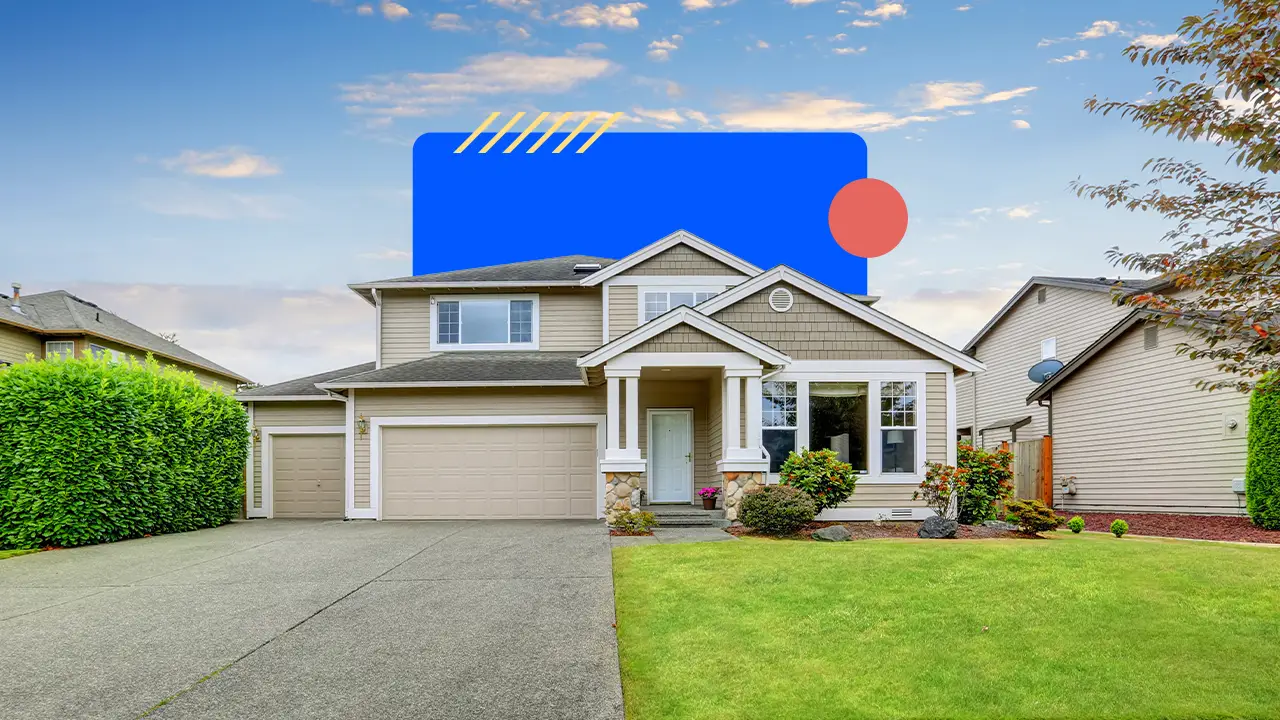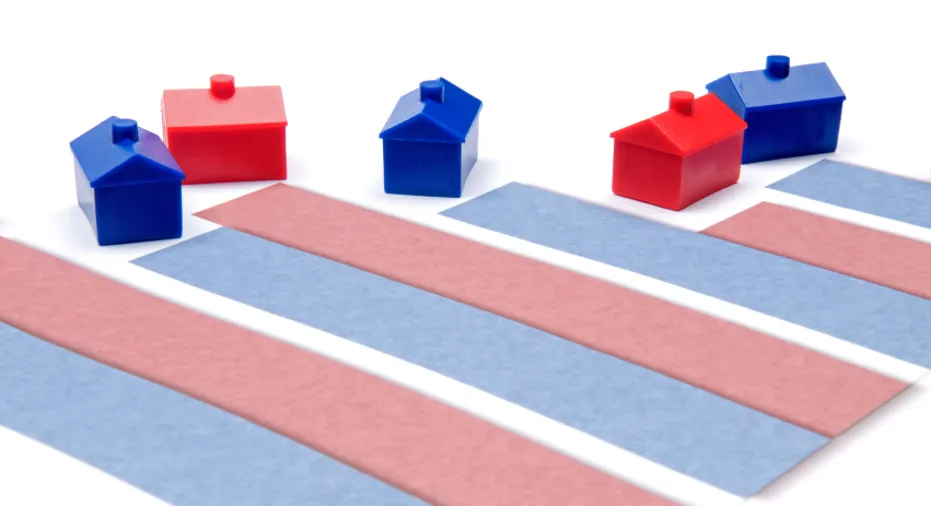When it comes to securing a mortgage, one of the key considerations for borrowers, especially those putting down less than 20%, is mortgage insurance. Typically, borrowers who make a down payment of less than 20% are required to carry mortgage insurance to protect the lender in case of default. Private Mortgage Insurance (PMI) is the most common form of this, but there’s an alternative option that can be more appealing to some borrowers: Lender-Paid Mortgage Insurance (LPMI).
LPMI can sound like a convenient way to eliminate monthly insurance premiums, but it comes with trade-offs. This blog post will explain what LPMI is, how it works, how it differs from PMI, and whether it’s the right option for you.
Lender-Paid Mortgage Insurance: How It Works and How It Differs from PMI

Lender-Paid Mortgage Insurance (LPMI) is a type of mortgage insurance where the lender, rather than the borrower, covers the cost of the mortgage insurance premium. This means the borrower does not have to pay an additional monthly mortgage insurance premium, as they would with Private Mortgage Insurance (PMI).
However, this “lender-paid” benefit isn’t as straightforward as it may seem. In exchange for covering the cost of the insurance, the lender typically charges a higher interest rate on the loan. Essentially, while you’re not paying for the mortgage insurance in the form of a monthly premium, you’re still absorbing the cost through a higher rate on your loan, which can increase the total cost of your mortgage over time.
Let’s break down the key differences between LPMI and PMI:
- PMI: Borrowers with PMI pay a monthly premium in addition to their mortgage payment. Once they reach 20% equity in their home, they can request to have PMI removed. This means PMI is temporary, and the borrower can save on costs once they no longer need the insurance.
- LPMI: Borrowers with LPMI don’t pay monthly insurance premiums. Instead, the cost is built into a higher interest rate. LPMI cannot be removed, even after you reach 20% equity in the home, which means you’ll be paying a higher rate throughout the life of the loan unless you refinance.
In both scenarios, mortgage insurance is there to protect the lender, not the borrower, in case of loan default.
Pros and Cons of Lender-Paid Mortgage Insurance: Is It Right for You?

Like any financial decision, LPMI has both advantages and disadvantages. Whether it’s the right option for you depends on several factors, including your financial goals, how long you plan to stay in your home, and your appetite for a higher interest rate.
Pros of LPMI
- Lower Monthly Payment One of the most appealing aspects of LPMI is that you won’t have to worry about an additional monthly PMI premium. For borrowers who are focused on keeping their monthly payments as low as possible, this can be a huge benefit.
- Tax Benefits In recent years, PMI premiums have been tax-deductible for certain income brackets. However, tax laws change frequently, and not everyone qualifies for this deduction. With LPMI, the entire interest rate (which includes the cost of insurance) may be tax-deductible, potentially offering a more predictable and stable tax benefit.
- No PMI Removal Hassle With PMI, borrowers typically have to wait until they reach 20% equity in their home to remove it, which can involve paperwork and additional steps. With LPMI, since there’s no monthly mortgage insurance premium, there’s no need to worry about removing PMI later down the line.
- Potentially Better for Short-Term Homeowners If you don’t plan on staying in your home for the full life of the loan, the higher interest rate associated with LPMI may not have as significant of an impact. In fact, if you only plan to stay in your home for five to seven years, LPMI could end up being more cost-effective than paying monthly PMI premiums.
Cons of LPMI
- Higher Interest Rate The most significant drawback of LPMI is the higher interest rate you’ll pay on your loan. This rate increase could be anywhere from 0.25% to 0.75%, depending on the lender and your financial situation. Over time, this can add up, especially if you keep the mortgage for many years.
- No Option to Remove While PMI can be removed once you reach 20% equity in your home, LPMI cannot. Even after you build significant equity, you’ll still be stuck with a higher interest rate unless you refinance the loan. Refinancing can incur additional costs, such as closing fees, so this is something to consider.
- More Expensive Over the Long Term Because of the higher interest rate, LPMI can end up being more expensive over the life of the loan compared to traditional PMI. If you plan to stay in your home for a long period, you may end up paying thousands of dollars more in interest than you would have if you had gone with PMI and removed it when eligible.
- Limited Flexibility With PMI, borrowers have the flexibility to remove the insurance once they meet the equity requirements. With LPMI, you’re locked into the higher rate unless you take steps to refinance, which can be a hassle and may not always be possible depending on market conditions.
Should You Opt for LPMI? A Guide to Understanding Mortgage Insurance Options

When deciding between LPMI and PMI, the best approach is to evaluate your personal financial situation, your goals, and how long you plan to stay in your home. Below are some key considerations to help guide your decision:
1. How Long Do You Plan to Stay in Your Home?
LPMI can be a smart choice for borrowers who don’t plan to stay in their home for an extended period. The higher interest rate may not have a significant impact if you sell or refinance within five to seven years. On the other hand, if you plan to stay in your home for decades, the higher interest rate could cost you significantly more over the life of the loan.
2. Are You Focused on Lower Monthly Payments?
If keeping your monthly payments as low as possible is a priority, LPMI can help you achieve that goal. With no PMI premium to pay, your monthly costs will be lower compared to a loan with PMI. However, keep in mind that the trade-off is a higher interest rate, so you’ll want to weigh this benefit against the long-term cost.
3. Do You Expect to Build Equity Quickly?
For borrowers who anticipate building equity quickly—either through rapid appreciation of their home’s value or by making extra payments—PMI may be a better option. Once you reach 20% equity, you can remove PMI and stop paying those monthly premiums, allowing you to reduce your overall costs.
4. What Are Your Future Financial Goals?
Consider whether you’re likely to refinance your mortgage in the future. If you plan to refinance in a few years, opting for LPMI may make sense because you could refinance into a lower rate once you have enough equity, effectively eliminating the higher rate associated with LPMI. However, refinancing comes with its own set of costs and risks, and there’s no guarantee that interest rates will remain favorable.
5. What is Your Credit Situation?
Borrowers with higher credit scores often get better terms when it comes to mortgage insurance. If you have excellent credit, PMI may not be as expensive as you think, and the ability to remove it later could save you more in the long run. However, if your credit is less than stellar, LPMI may offer a more attractive option, as the cost of PMI could be higher for lower credit scores.
Conclusion: Is LPMI Right for You?
Lender-Paid Mortgage Insurance (LPMI) can be a useful option for borrowers looking to eliminate monthly mortgage insurance premiums and reduce their immediate monthly payments. However, the higher interest rate associated with LPMI means you’ll be paying more over the long term, so it’s crucial to carefully consider your financial goals and how long you plan to keep the mortgage.
For short-term homeowners or those focused on maximizing their monthly cash flow, LPMI could be a beneficial solution. But for those planning to stay in their home for many years or who expect to build equity quickly, traditional PMI may offer more savings over time.
As with any financial decision, it’s essential to evaluate your specific situation and consult with your lender to explore all available options. Understanding how LPMI works and how it compares to PMI will help you make an informed decision that aligns with your homeownership goals.
Now Check:
Mortgage Insurance for Self-Employed Borrowers
Mortgage Protection Insurance (MPI): Is It the Right Choice for Homeowners?
FHA Mortgage Insurance Explained: What You Need to Know
Private Mortgage Insurance (PMI) Explained
